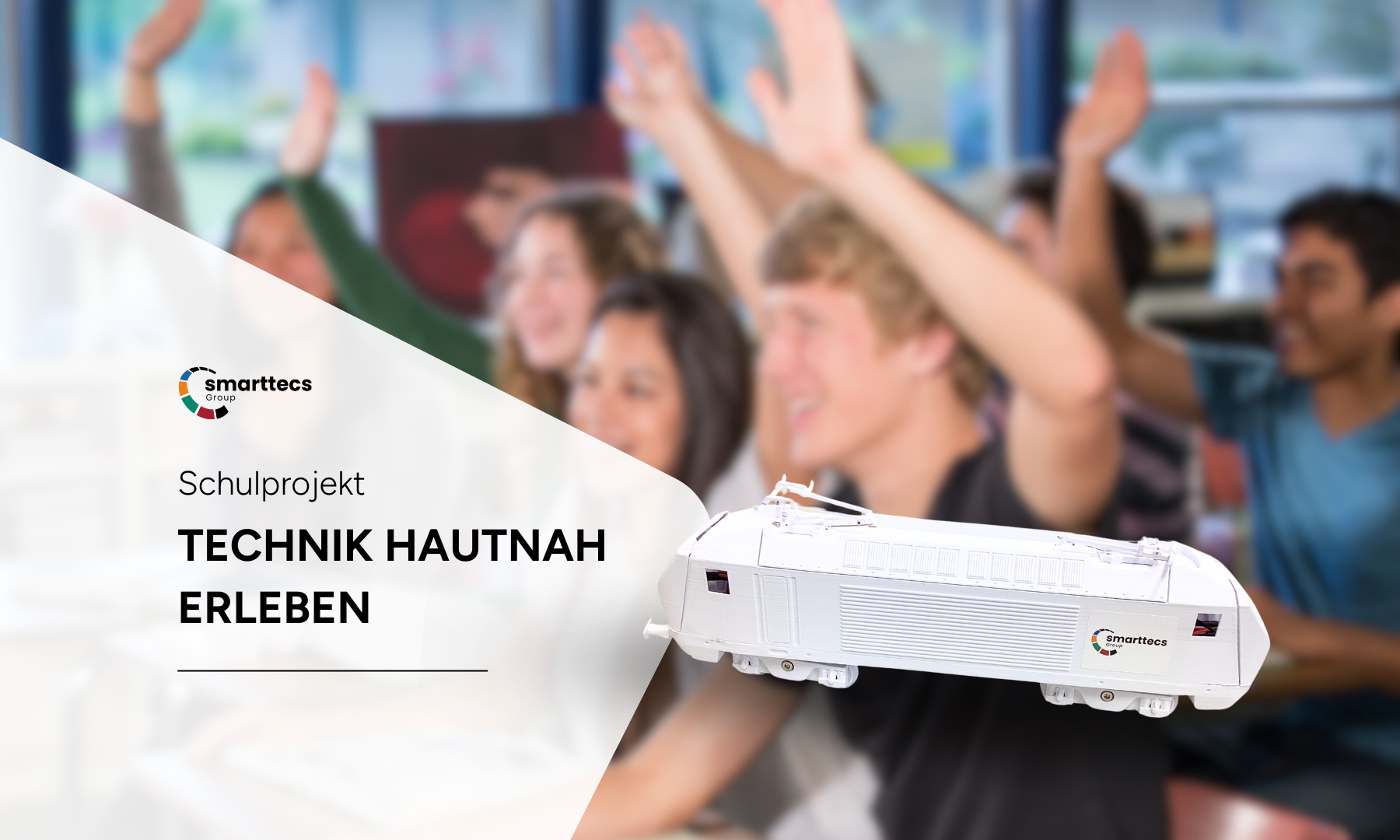Last week, we had the opportunity to conduct an exciting school project at the Martin Luther Gymnasium Frankenberg. Together with 21 students from grades 8–11, we developed a working model train, which everyone was able to take home at the end.
From idea to implementation
The students worked in small development teams to independently design and implement various components of a railway model. They took on different tasks:
Project management: Maintaining requirements, planning work processes, and distributing tasks within the team.
Website design & programming: Developing a web application using HTML, CSS, and JavaScript to control the model.
Embedded programming: Programming the controller in C to control lighting.
Hardware development: Creating the circuit diagram and selecting electronic components for the controller.
Production & testing: Assembling the models, soldering the electronics, testing, and final assembly.
Website design & programming: Developing a web application using HTML, CSS, and JavaScript to control the model.
Embedded programming: Programming the controller in C to control lighting.
Hardware development: Creating the circuit diagram and selecting electronic components for the controller.
Production & testing: Assembling the models, soldering the electronics, testing, and final assembly.
The railway model itself was produced by us using 3D printing – this would not have been possible without our dedicated employees who provided their 3D printers.
From development to production
After the students had developed their software and hardware design, they went into production to make their ideas a reality:
Assembly & Mechanics – The track models were assembled from the printed components.
Soldering the electronics – The previously developed circuits were transferred to real components.
Installing the software – The developed programs were transferred to the embedded hardware.
Soldering the electronics – The previously developed circuits were transferred to real components.
Installing the software – The developed programs were transferred to the embedded hardware.
Testing – The test steps were carried out one after the other on the models, and development and production errors were corrected.
Final assembly & fine-tuning – After all the components were assembled, the finished railway model was on the school desk.
Final assembly & fine-tuning – After all the components were assembled, the finished railway model was on the school desk.
Enthusiasm that went beyond the classroom
The students’ motivation was impressive! Many volunteered to stay longer and even came to school on their day off to finish their train models. This shows how exciting practical technology lessons can be.
At the open day, the students presented the project to all interested parents and visitors.
A heartfelt thank you to the school administration, the computer science teacher and the supervising teacher who made this project possible on the school premises.
With this project, we were able to not only impart technical knowledge to the young people, but also promote teamwork and creative problem-solving. We look forward to implementing more projects like this in the future!










